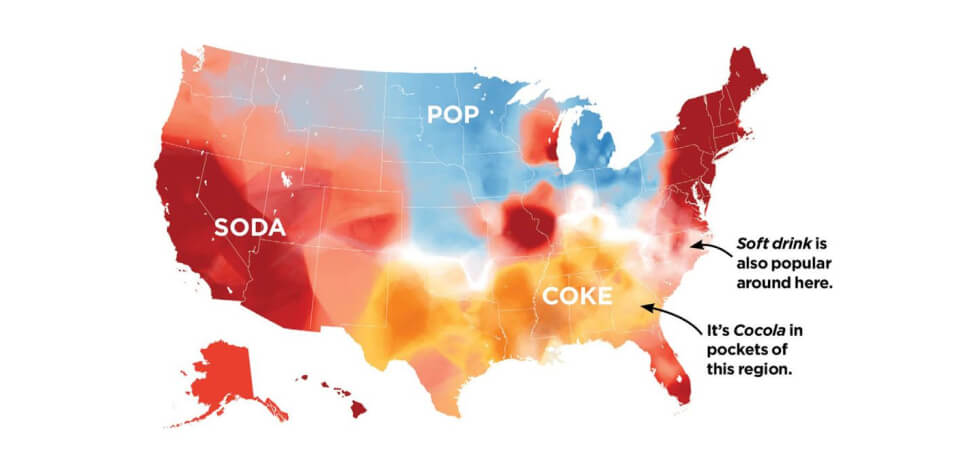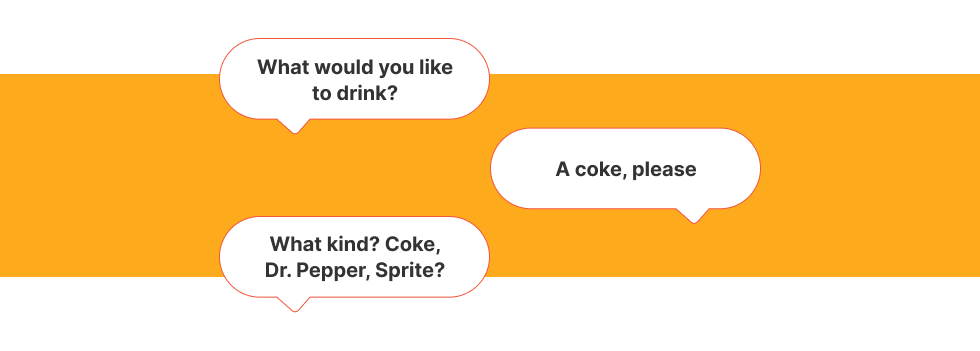Table of Contents
Introduction
A common piece of writing advice is to “write what you know”. However, for conversation designers, we need to move beyond our own personal language usage, in order to provide the best conversational experience.
Every person has what is known as an “idiolect”: an individual’s unique use of language that encompasses vocabulary, grammar, and pronunciation. It is common for individuals to take their own experience with accents, grammar, and spelling rules, and expect others to follow those same rules. You may consciously or subconsciously judge others who break these rules. However, what is “right” for you, might be “wrong” for somebody else.
Everyone has biases about how language should be used. What’s important is recognizing what vocabulary, grammar constructions, and pronunciations that you believe to be “right” or “wrong” — and checking with someone else who has a different set of sociocultural experiences than you. Just because something is “ungrammatical” for you, doesn’t mean that it’s not perfectly acceptable for other people.
Based on Conversation Design best practices, we need to think about inclusivity. Designers need to capture not how dictionaries and style guides say we “should” converse, but how people actually speak and write messages. Language is flexible and can change rapidly, with new words being introduced or falling out of favour all the time.
With English, often the focus is on American English vs British English – however, that does not account for how many broad varieties of English there are. An incomplete list of high-level varieties includes: Australian English, Canadian English, Caribbean English, Indian English, Singaporean English, and South African English.
Within each of these varieties, there are multiple dialects. A dialect is a particular form of a language that is specific to a region or social group.
How dialectical variation can come into play when designing
Imagine you are designing a bot for a restaurant, and are working on an ordering use case. Let’s focus on drinks.
If we think of the drink category that contains items like Coke, Pepsi, Sprite – what would you call it?
Looking globally: in Canada, it’s “pop”. In the United Kingdom, Ireland, Australia, and New Zealand, “fizzy drink” is common. In South African English, “cool drink” or “cold drink” are used and frequently run together as “cooldrink” (from the Afrikaans koeldrank).
The heat map below is for the U.S and illustrates the amount of variety a ‘simple’ word can have.

In a restaurant in the southern U.S., the following exchange between a server and customer can occur:

Using coke as a generic term for any carbonated drink may sound “wrong” to users outside of the southern U.S. – but we should still design a hypothetical restaurant bot to recognize it. Variation in vocabulary needs to be included in intent patterns and training phrases.
Even if your bot is U.S.-based, there’s no guarantee that your users will all speak U.S. English. What if a user is on holiday from another country? What if the user speaks English as an additional language?
Individual vocabulary choices should not be thought of as just edge cases. Instead, they are likely a clue to a dialect your bot doesn’t accommodate yet.
Not every word has variation! But you’ll never know if you don’t ask: “What would you call this?” “How do you say that?”.
Dialect diversity checklist
Here is a checklist to help you incorporate a variety of dialects into your designs.
- Poll your immediate team members and stakeholders
- Engage external team members by creating a post in your intranet or internal communication channels (i.e. Slack)
- Include as an icebreaker in meetings
- Review existing transcripts
- Conduct Wizard of Oz testing
- Facilitate end-user testing
The best user experience is one where the user feels supported. Instead of designing to a standard, allow real language use to guide us as designers.






